Interested in finding out what muscles does bike riding work? For cyclists, understanding the muscle groups at work during a ride is crucial. It’s the key to unlocking the full potential of this sport and achieving optimal fitness.
As you pedal your way through scenic routes or challenging terrains, your muscles function in harmony. From the powerhouse quadriceps propelling your bike forward to the endurance-building calf muscles, cycling engages a wide range of muscle groups.
This engagement not only enhances your cycling performance but also contributes significantly to your overall fitness. In this article, we will find out what muscles does bike riding work.
What Muscles Does Bike Riding Work?
When it comes to the exhilarating world of bike riding, you might think it’s all about the legs. You are partially right, but the muscle groups engaged in cycling work together to power your ride, provide stability, and maintain proper posture.

Let’s find out which muscle groups are used in bike riding and uncover the major muscle groups that play a pivotal role in this sport.
1. Quadriceps (Front Thigh)
The quadriceps are the stars of the show when it comes to pedaling. These muscle groups on the front of your thighs are responsible for extending your knees and generating the downward force required to propel the bike forward.
2. Hamstrings (Back Thigh)
As the quadriceps extend the knees during the downstroke, the hamstrings, located on the back of your thighs, flex the knees during the upstroke. This balanced interplay of quadriceps and hamstrings ensures a smooth pedal stroke.
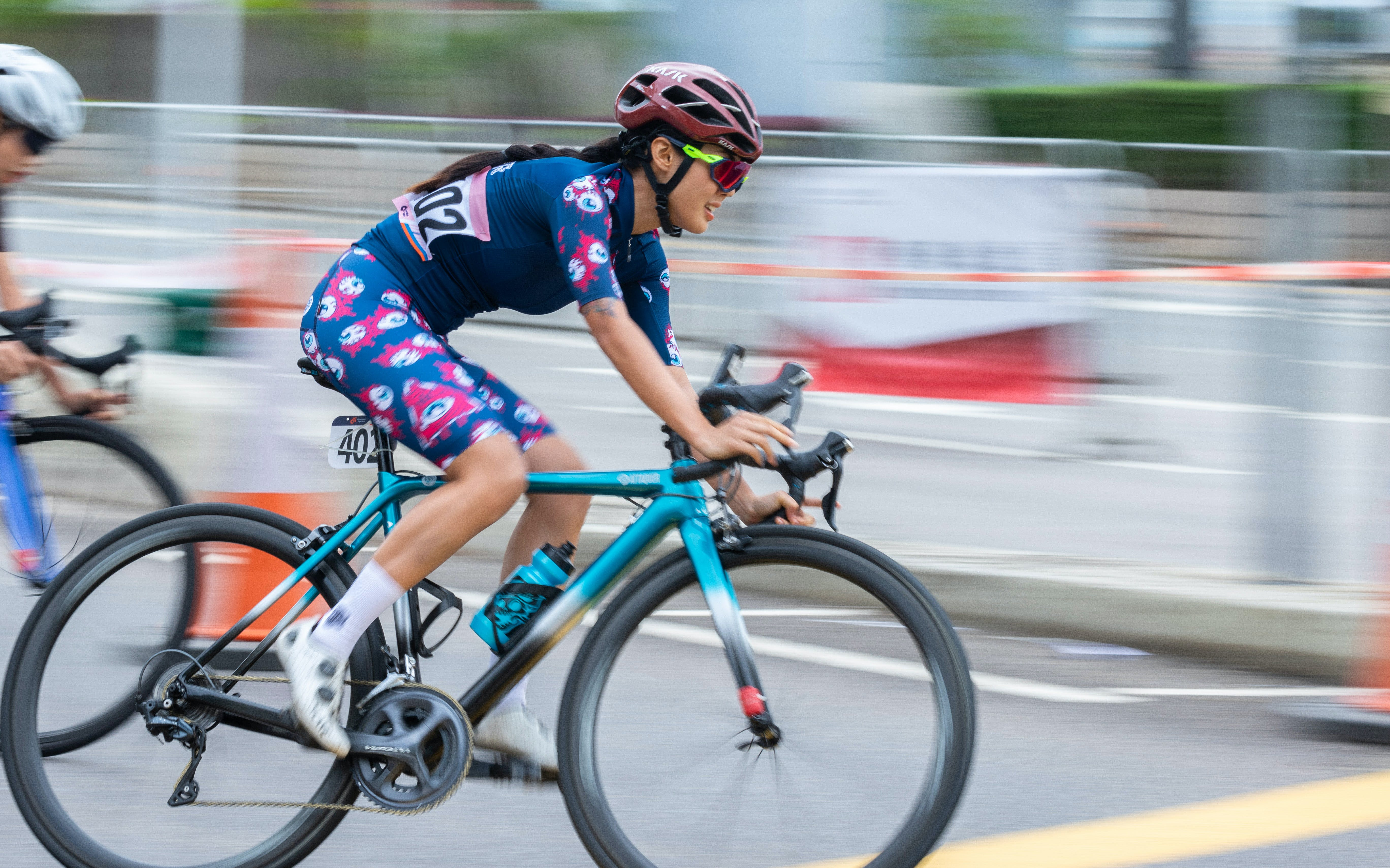
3. Glutes (Buttocks)
Your gluteal muscles, or buttocks, provide power and stability to your pelvis, preventing swaying and ensuring an efficient transfer of energy from your legs to the pedals.
4. Calves (Calf)
The calf muscles, specifically the gastrocnemius and soleus, play a crucial role in controlling the angle of your foot on the pedal and aiding in ankle flexion. This helps maintain a smooth pedal stroke and reduces the risk of cramps.
5. Hip Flexors (Front of the Hip)
These muscles assist in lifting your knees during the pedal upstroke, ensuring a well-rounded pedal rotation and minimizing strain on the lower back.
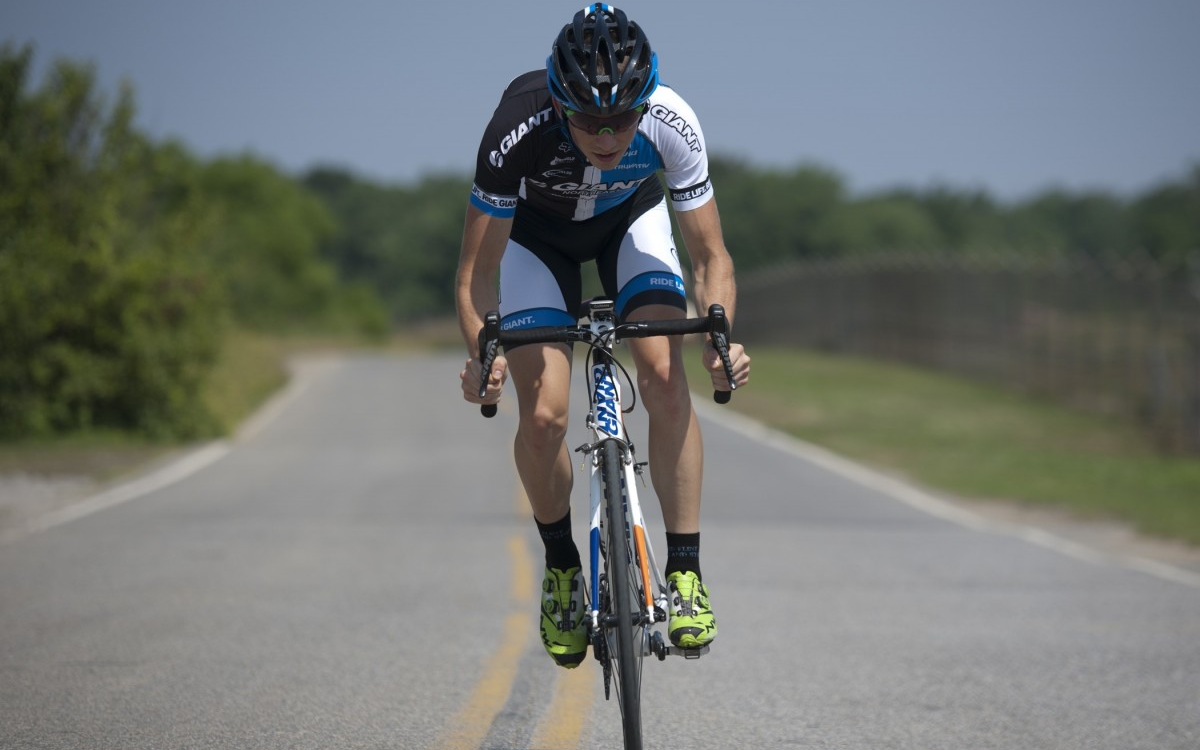
6. Core (Abdominals & Lower Back)
A strong core is essential for stability and posture. Your abdominals and lower back muscles help you maintain an upright position, reducing fatigue and enhancing control.
7. Upper Body (Shoulders, Arms, & Chest)
While not as extensively used as the lower body, these muscles come into play when steering, maintaining balance, and controlling the handlebars.
Understanding which muscle groups are engaged during bike riding is not only fascinating but also crucial for cyclists. It enables you to fine-tune your training, improve your performance, and reduce the risk of injuries.

So, next time you hop on your bike, appreciate the intricate dance of muscle groups that makes your ride both thrilling and effective.
How Are Those Muscles Used in the Pedal Stroke?
The art of cycling is not merely about covering distances; it requires precise movements and muscle engagement. Understanding how these muscle groups are used in the pedal stroke is the key to unlocking the full potential of your cycling performance.
Let’s take a closer look at the intricacies of the pedal stroke and the muscle groups that drive it.
The Pedal Stroke Phases
Downstroke
This is the powerhouse phase of the pedal stroke, where you exert maximum force on the pedals to propel the bike forward. During the downstroke, the primary muscles engaged are the quadriceps (front thigh). They extend your knee, driving the pedal downward.

Upstroke
While the upstroke might seem less intense, it’s equally vital for a smooth pedal stroke. During this phase, the hamstrings (back thigh) and hip flexors (in the front of the hip) come into play.
The hamstrings flex the knee, pulling the pedal up, while the hip flexors assist in lifting your knee, preparing for the next downstroke.
Recovery
In this transitional phase, your foot moves from the upstroke to the downstroke position. While it might appear less active, the calf muscles play a crucial role in controlling the angle of your foot on the pedal, ensuring a seamless transition.
Muscle Engagement & Efficiency
Efficiency in the pedal stroke is vital for top cycling performance. A smooth pedal stroke minimizes energy waste, reduces fatigue, and boosts speed and endurance. Coordination among muscle groups is key, turning your pedal stroke into a coordinated effort.
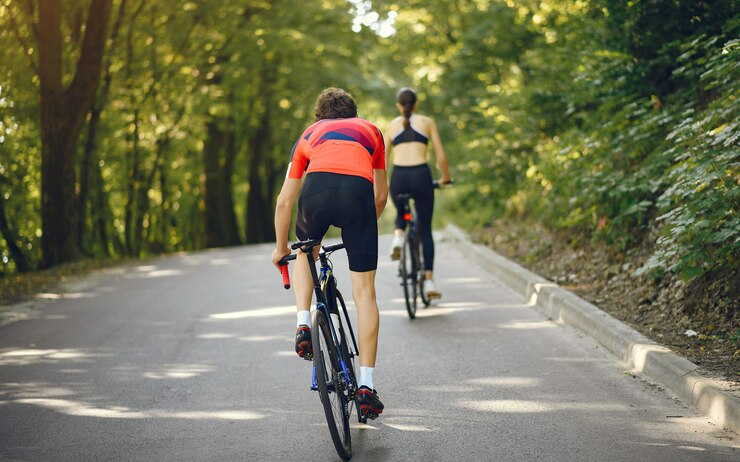
Efficiency isn’t just about speed — it also prevents overuse injuries and aids in tackling challenging terrain. Maintaining a consistent rhythm is crucial in both road and mountain biking.
Which Muscles Are Used When Climbing and Descending on Bike?
Cycling enthusiasts know that conquering steep climbs and thrilling descents are two distinct challenges that require a keen understanding of which muscle groups come into play.
Let’s explore how different muscle groups are activated during these contrasting scenarios.
During Climbs
Quadriceps (Front Thigh)
Climbing uphill places a heavy demand on your quadriceps. These front thigh muscles are responsible for extending your knee and generating the downward force needed to propel your bike against gravity.
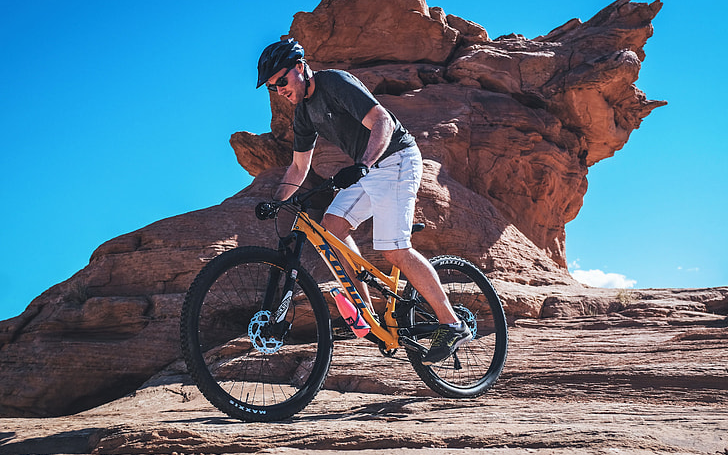
Glutes (Buttocks)
Your gluteal muscles, situated in the buttocks, play a pivotal role in providing power and stability during climbs. They ensure your pelvis remains steady and facilitate efficient energy transfer to the pedals.
Calves (Calf)
The calf muscles work in conjunction with your quadriceps to maintain control during ascents. They help control the angle of your foot on the pedal and assist with ankle flexion.
During Descents
Quadriceps & Hamstrings
While descending, you’ll rely on your quadriceps and hamstrings. The quadriceps engage to control your speed by applying pressure to the pedals, while the hamstrings assist in maintaining control.
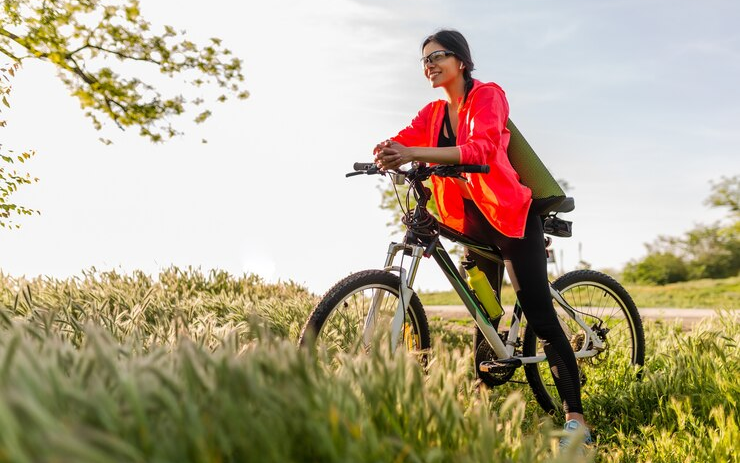
Core (Abdominals & Lower Back)
Descending requires a stable core to keep your upper body balanced and your bike under control. Strong abdominal and lower back muscles are essential for this.
Upper Body (Arms & Shoulders)
Your upper body muscles, including your arms and shoulders, play a crucial role in steering and maintaining control on winding descents.
Core & Upper Body Engagement
The backbone of stability and posture in cycling lies in the core muscles, forming a robust foundation that counters forces, maintaining balance and an upright position on the bike.
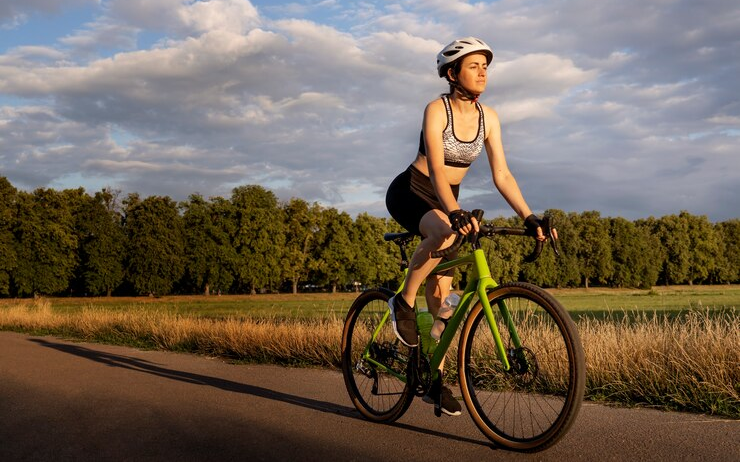
They support the lower back and spine, not only prevent slouching but also reduce fatigue during rides. Beyond stability, a strong and engaged core facilitates efficient power transfer from legs to pedals, minimizing energy wastage and lowering the risk of injuries.
Simultaneously, upper body muscles, including arms and shoulders, play a multifaceted role. Steering with precision provides balance on various terrains and offers crucial support during climbs or sprints, they contribute significantly to an enhanced and controlled cycling experience.
How Does Your Riding Style Change the Muscles That Cycling Works?
Cycling is a versatile sport, and your riding style greatly influences which muscle groups are engaged during your rides. Let’s explore how different types of cycling, like road cycling, mountain biking, gravel riding, and track cycling, impact the muscle groups at work.
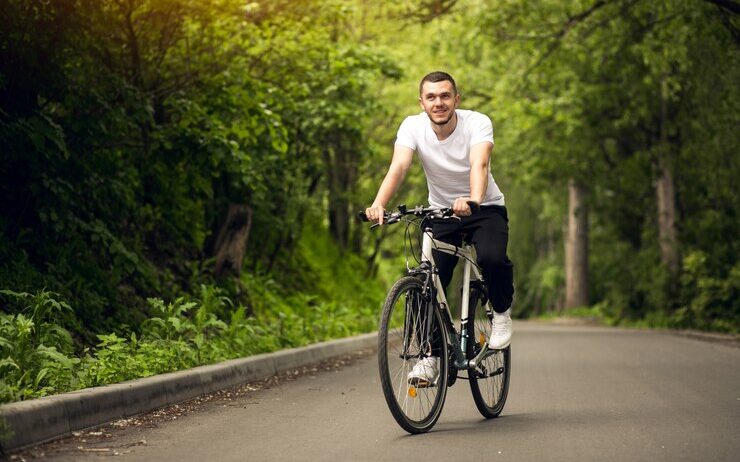
1. Road Cycling
Road cycling predominantly targets the lower body muscles, including quadriceps, hamstrings, glutes, and calves. They work harmoniously during long, steady rides on smooth roads.
The focus in road cycling is on endurance and maintaining a consistent cadence, which engages these leg muscles for extended periods.
2. Mountain Biking
Riding on rugged terrain requires a full-body effort. In addition to the lower body muscles, your core, upper body, and arms are actively engaged to navigate obstacles, absorb shocks, and provide control.
The challenging terrain and frequent elevation changes require bursts of power, engaging not only leg muscles but also upper body muscles for steering and balance.
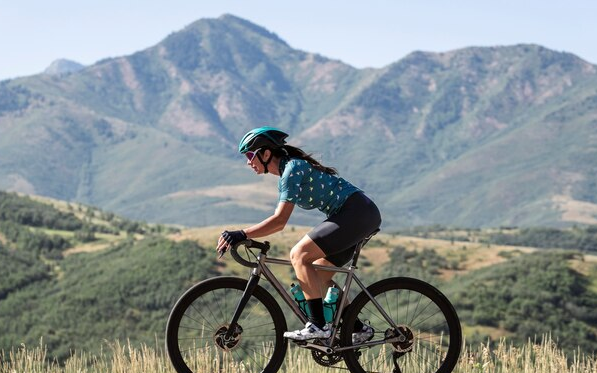
3. Gravel Riding
Gravel riding falls somewhere between road and mountain biking. It engages the lower body muscles similar to road cycling but also calls upon the core and upper body for stability and control on rough gravel roads.
Gravel riding combines endurance with elements of off-road adventure, demanding a balanced engagement of both lower and upper body muscles.
4. Track Cycling
Track cycling focuses on speed and power. It heavily engages the leg muscles, especially the quadriceps, and hamstrings, as riders pedal at high speeds on smooth, banked tracks.
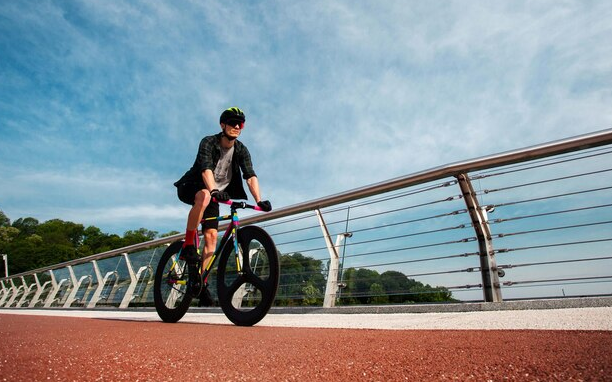
The emphasis is on explosive efforts and sprinting, which puts significant strain on the leg muscles and requires precise control through the handlebars.
Conclusion
So, as you ride your bike, remember the muscles at work — from strong legs to a stable core — ensuring a smooth and effective ride. This balance is your key to pedaling easily, staying stable, and avoiding injuries.
Cycling is more than just strong legs; it’s about coordinating your whole body. Whether you’re a seasoned rider or just starting out, enjoy the adventure and health benefits of cycling. Make it a regular part of your routine for a full-body workout, paving the way for a stronger and healthier life.
To sum it up, knowing and using these muscles not only makes your cycling better but also keeps you overall healthier, turning every ride into a fulfilling and health-boosting journey.
FAQs
30-60 minute bike ride provides a good workout.
Cycling may temporarily increase testosterone levels.
Riding a bike engages multiple muscle groups.
Yes, cycling can help reduce overall body fat, including belly fat.



